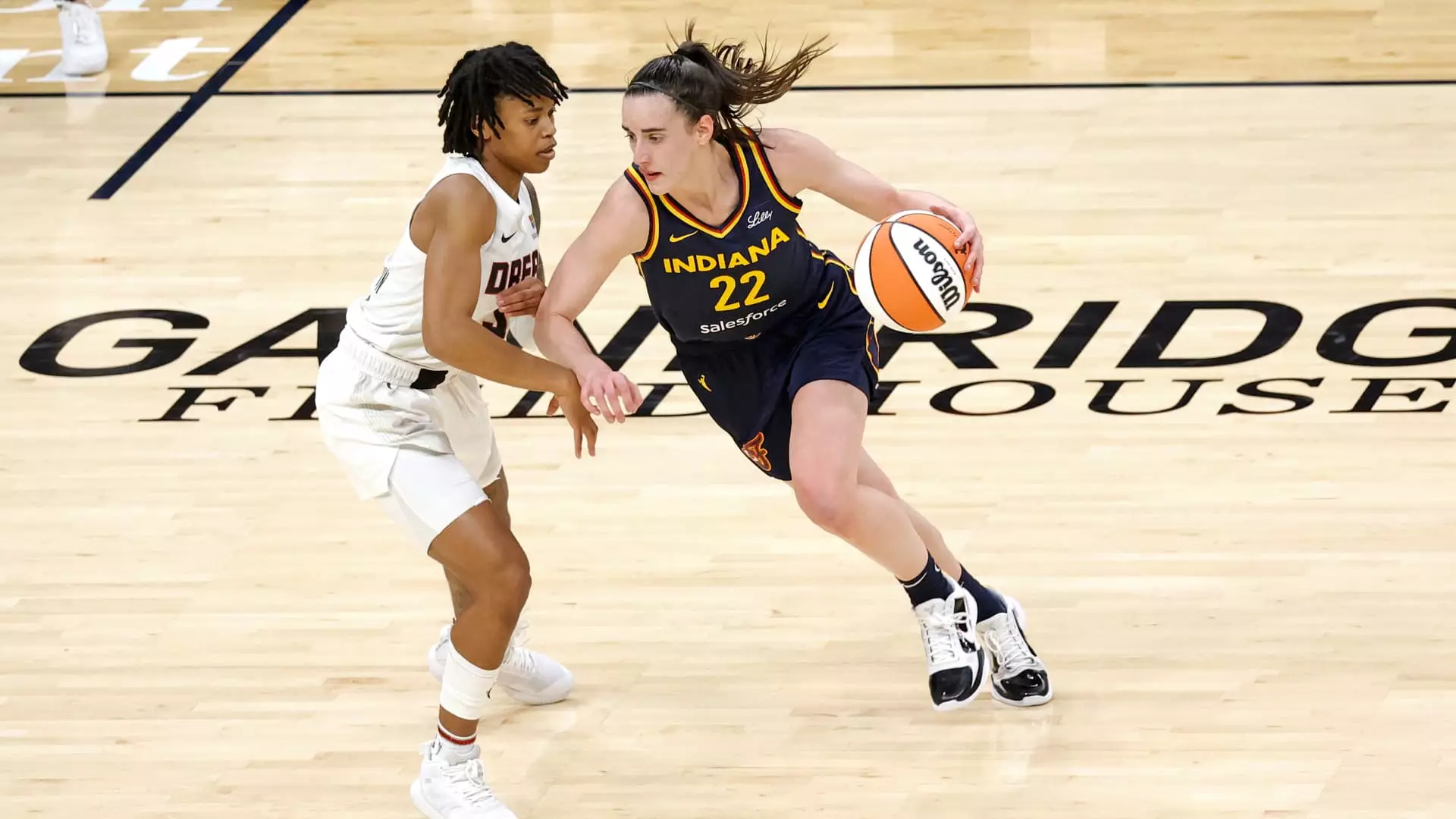The Women’s National Basketball Association (WNBA) has reached remarkable new heights in its 2024 season, showcasing not only the athletic prowess of its players but also solidifying its position in the sports entertainment market. The league witnessed unprecedented viewership, drawing over 54 million unique viewers across various broadcast platforms, marking a significant leap in its audience engagement. Traditionally dominated by male counterparts, the WNBA has begun to carve out its niche, emerging as a prominent destination for sports fans, particularly due to the electrifying performance of emerging stars like Caitlin Clark and Angel Reese.
The season’s statistics are astonishing. Attendance levels soared to their highest in over two decades, with a nearly 50% increase compared to the previous year. This surge in attendance is not merely numerical; it demonstrates a cultural shift as fans fill arenas to watch some of the brightest talents in women’s basketball. The number of sellout games skyrocketed, surpassing the previous season’s figures by a considerable margin, showcasing a broader acceptance and enthusiasm for women’s sports.
The stellar performances of rookies such as Caitlin Clark of the Indiana Fever and Angel Reese from the Chicago Sky have energized not only their respective teams but the entire league as well. Their extraordinary skills on the court have cultivated a loyal fanbase, contributing to a remarkable increase in attendance and merchandise sales. The Fever, in particular, reported more than a fourfold increase in attendance, reflecting the significant draw that these new athletes have generated.
As Clark and Reese captured the imaginations of fans, the Las Vegas Aces aimed to cement their status as a dynasty with a potential third championship in a row. Their pursuit of excellence underscores the competitive spirit now permeating the league, further intensifying the rivalry and interest surrounding WNBA games.
The 2024 season was not just a win for attendance; it also led to a vast expansion in media relationships and social media interactions. The social media presence of the WNBA exploded, with their platforms garnering nearly 2 billion video views—an increase of more than 400% from the previous year. This impressive statistic illustrates how the league is not only appealing to traditional sports fans but also reaching a wider audience through digital mediums.
In another highlight of the season, a stunning $2.2 billion media rights deal was secured, extending over 11 years and promising further growth for the league. Negotiated alongside the broader NBA agreement, this milestone emphasizes the increasing value of women’s sports and the recognition of its potential in the market. The media coverage has expanded as well, with regular season game broadcasts averaging a record of over a million viewers.
Despite the remarkable achievements, the league faces significant challenges, highlighted by incidents of online harassment and racism directed toward players. While WNBA Commissioner Cathy Engelbert publicly supported the league’s athletes, her initial failure to unequivocally address the vitriol faced by players sparked backlash throughout the community. This aspect highlights a critical area for the league to address as it pursues its growth trajectory; maintaining an environment that uplifts and protects its athletes must be paramount.
As the season progresses, the WNBA’s growth holds potential for societal impact beyond the court. By shining a lens on important issues such as online harassment and inclusivity in sports, the league can position itself as a pioneer not only for women in sports but for equitable representation in athletics overall.
As the WNBA garners attention and enthusiasm through its star players and record-breaking statistics, it also contends with deeper social issues that require attention and resolution. The league stands at a crossroads where it must embrace its newfound popularity while tackling the complex challenges ahead. The future of the WNBA appears bright, but it is crucial that the league navigates this landscape with care, ensuring that progress for its athletes coincides with a commitment to integrity and equality.

